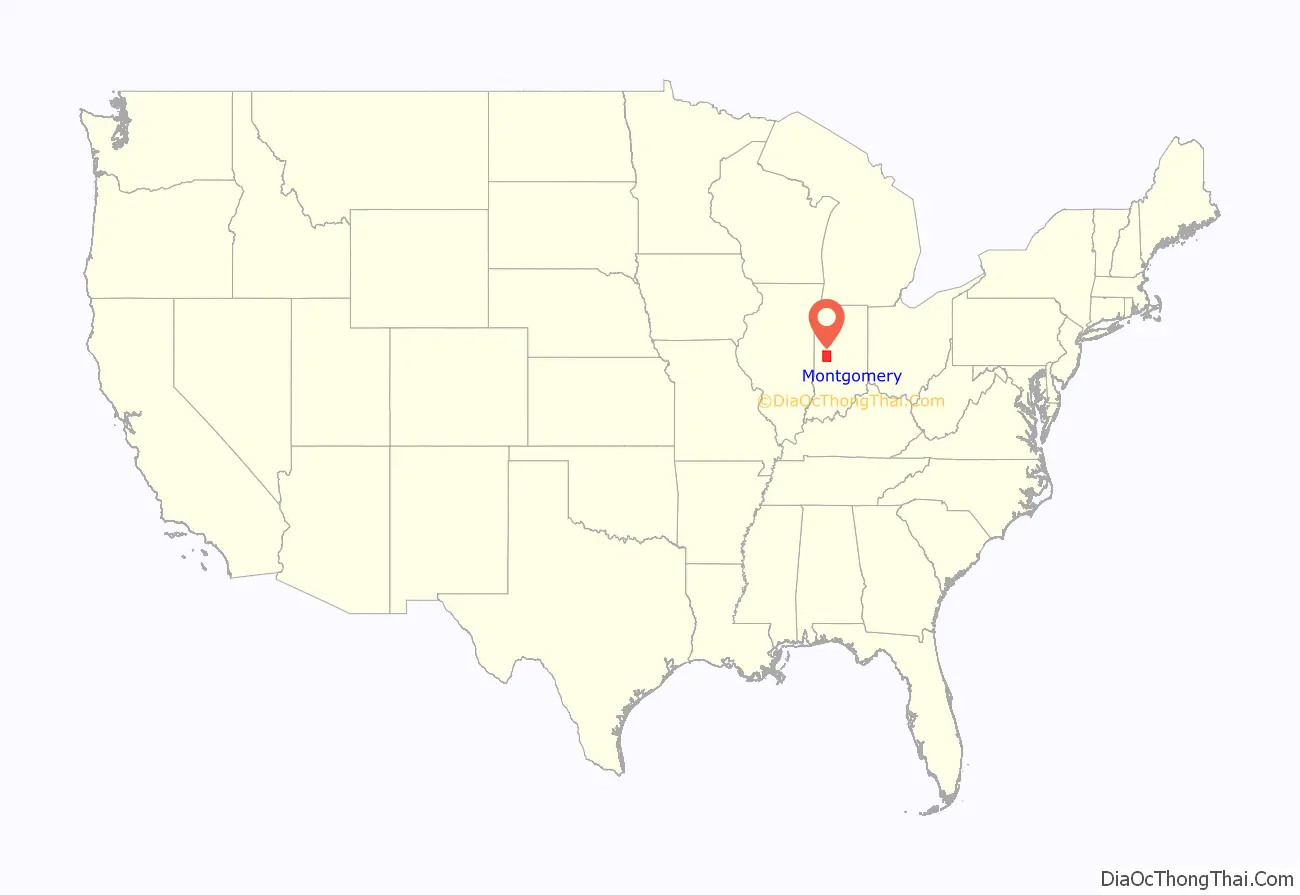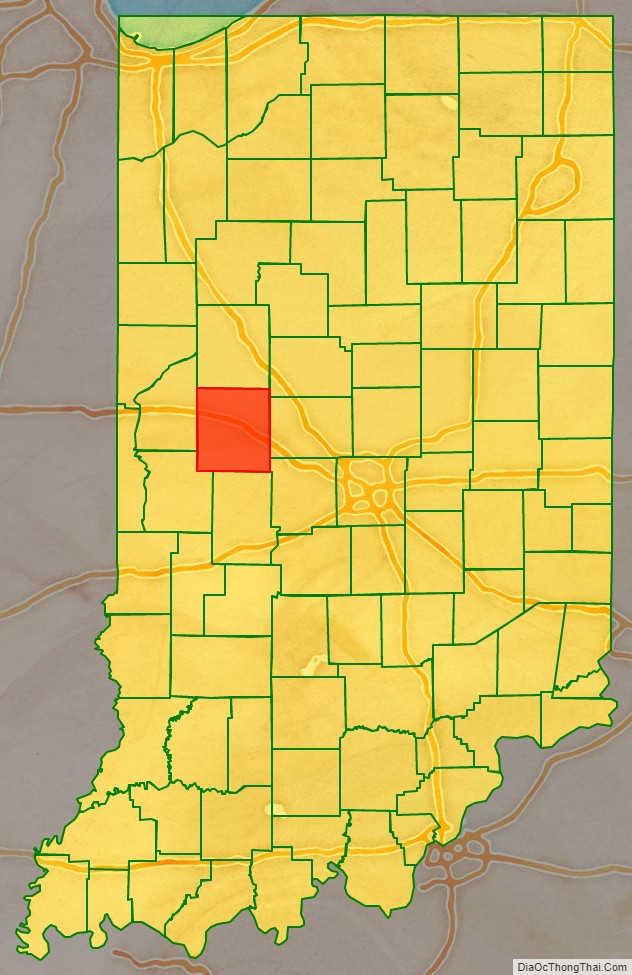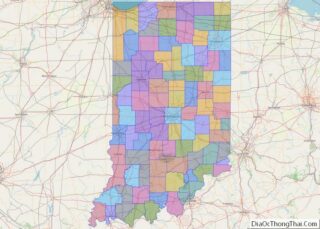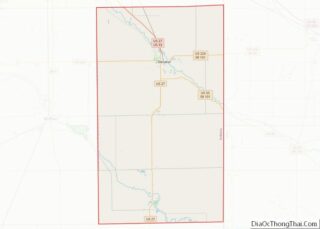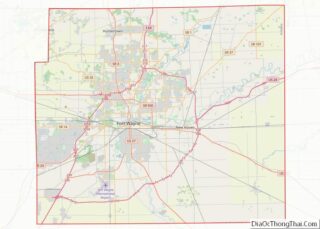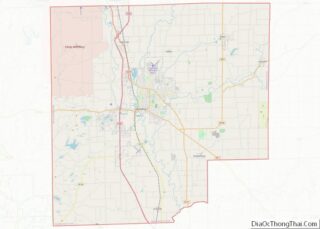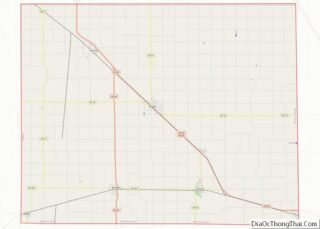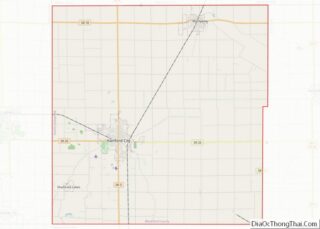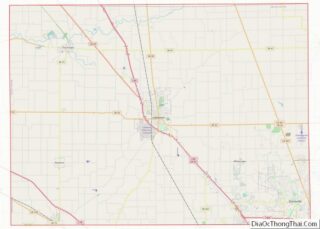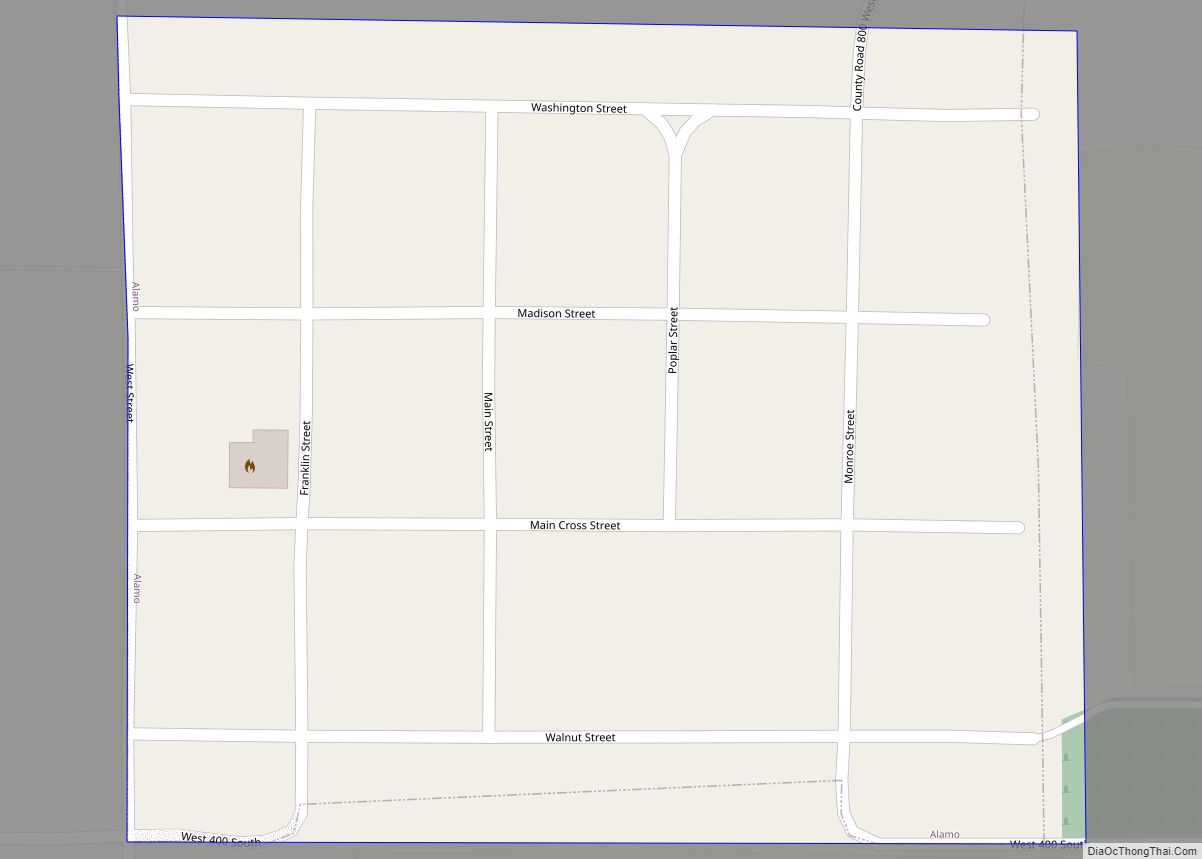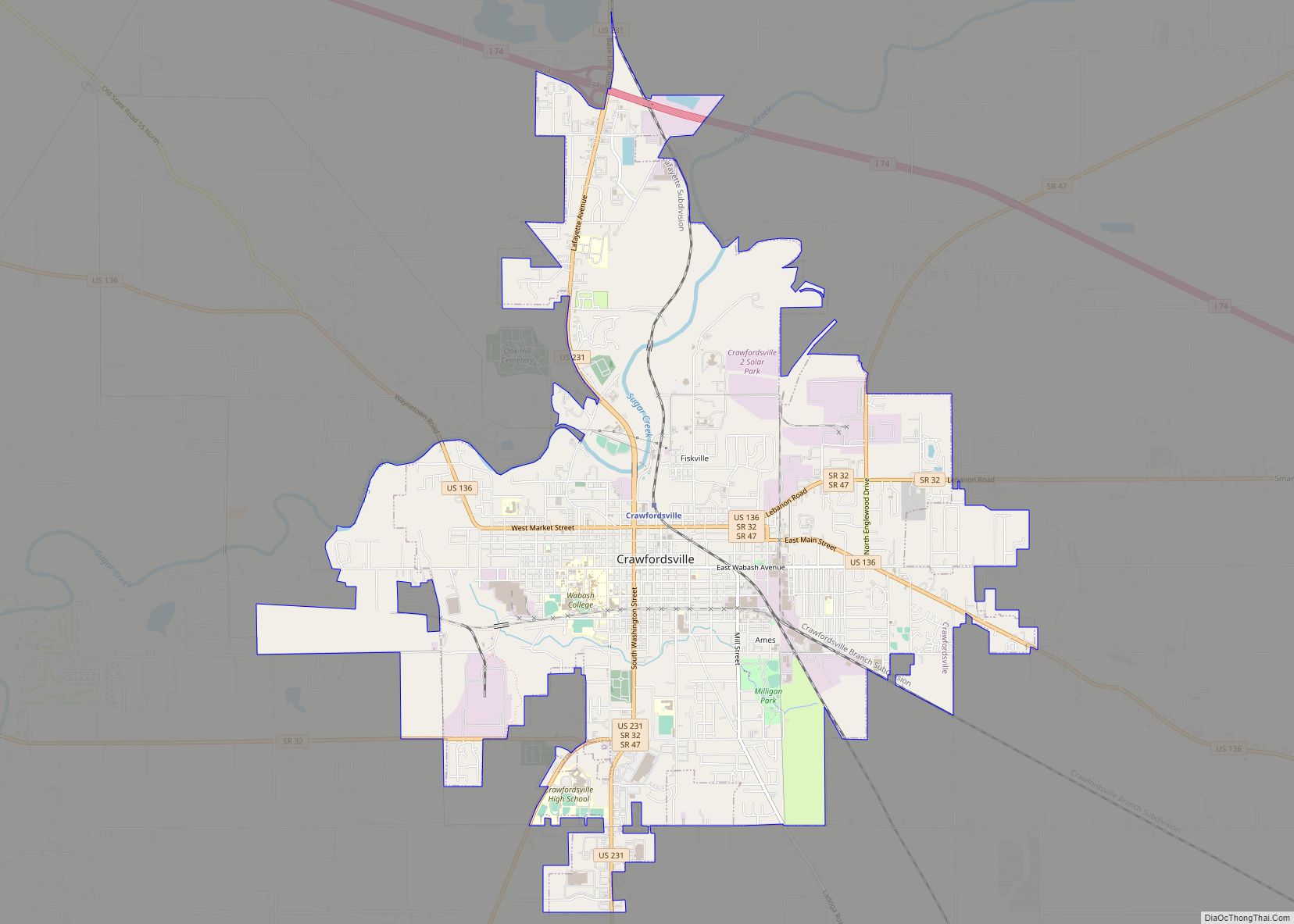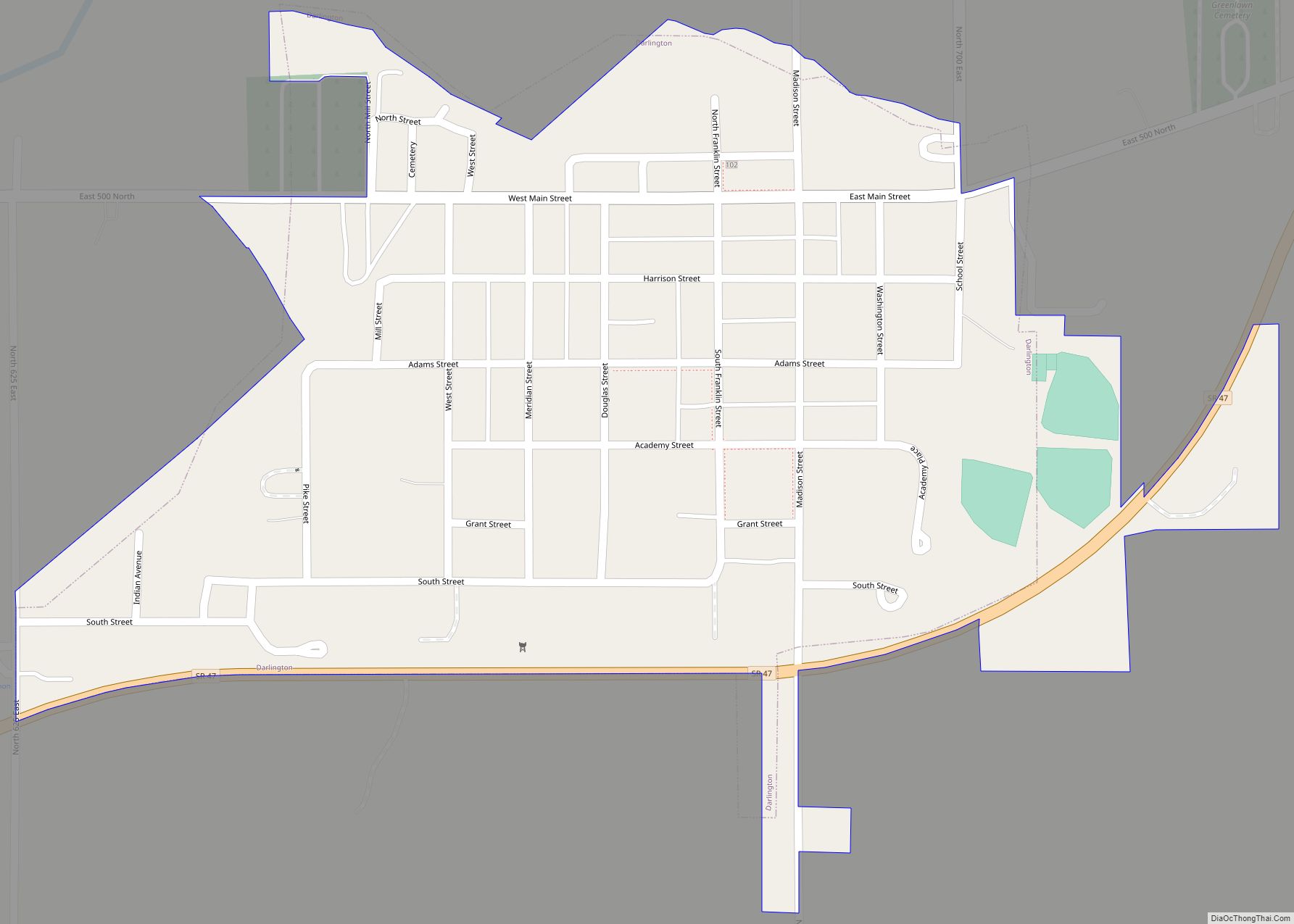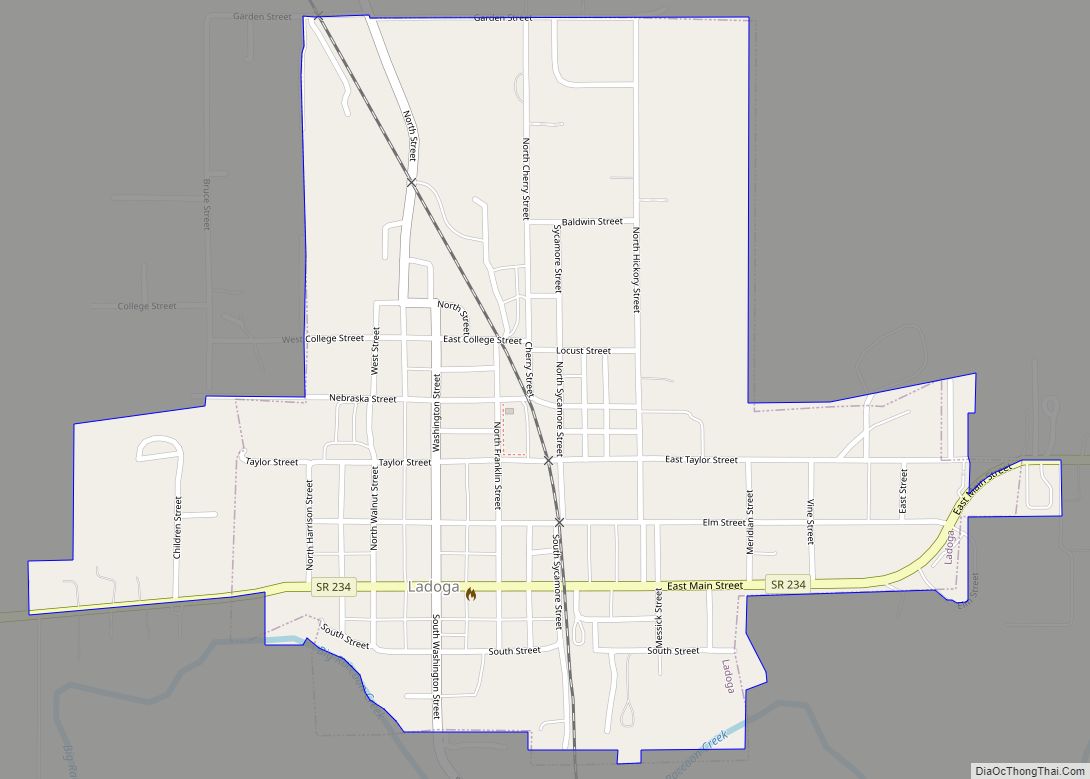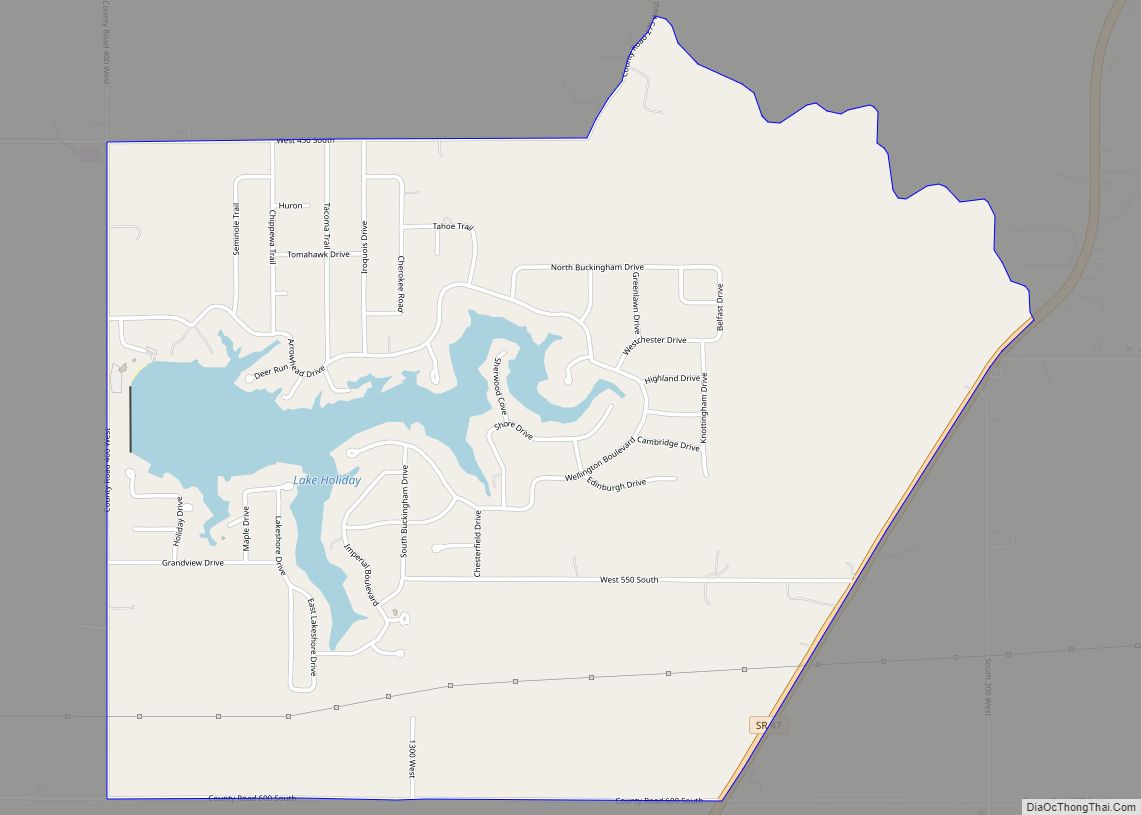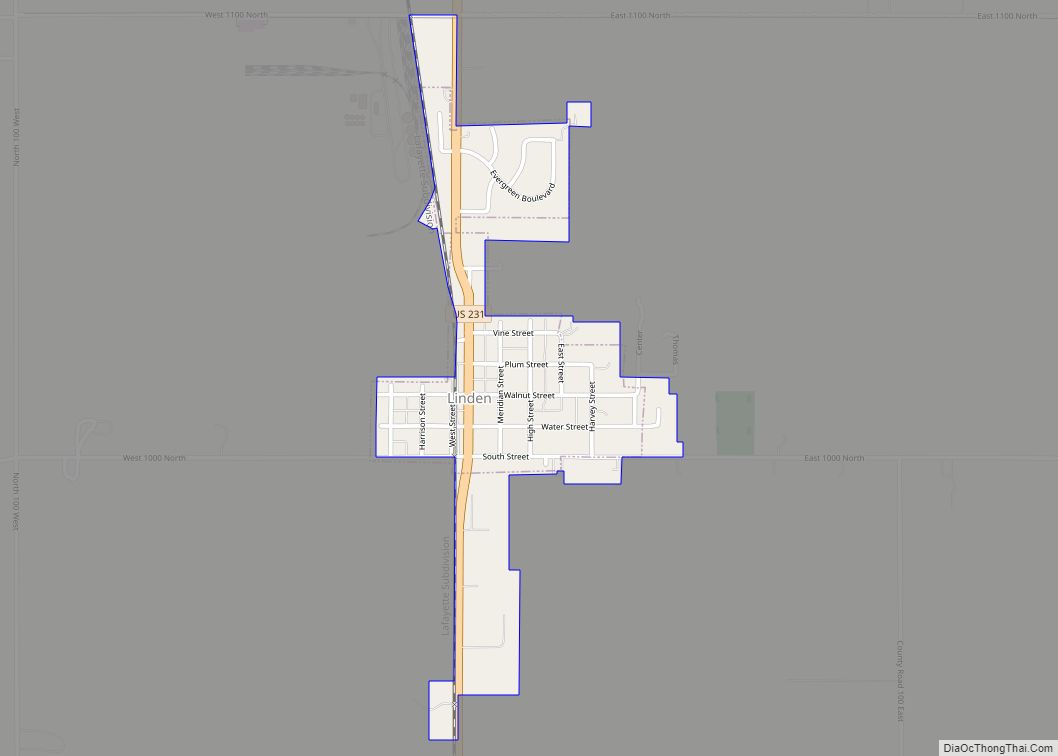Montgomery County is a county in the U.S. state of Indiana. As of the 2020 United States census, it had a population of 37,936. Its county seat is Crawfordsville. The county is divided into eleven townships which provide local services.
Montgomery County comprises the Crawfordsville, IN Micropolitan Statistical Area.
| Name: | Montgomery County |
|---|---|
| FIPS code: | 18-107 |
| State: | Indiana |
| Founded: | 21 December 1822 (authorized) 1 March 1823 (organized) |
| Named for: | Richard Montgomery |
| Seat: | Crawfordsville |
| Largest city: | Crawfordsville |
| Total Area: | 505.44 sq mi (1,309.1 km²) |
| Land Area: | 504.61 sq mi (1,306.9 km²) |
| Total Population: | 37,936 |
| Population Density: | 75.18/sq mi (29.03/km²) |
Montgomery County location map. Where is Montgomery County?
History
Early history and settlement
The earliest known inhabitants of the area that would become Montgomery County were the Mound Builders, Native Americans who built large earthen mounds, two of which were assumed to have been constructed in southeastern Franklin Township. However, research in the 1990s determined that those mounds were probably natural rather than human-made formations. Subsequent Native American tribes occupied the area until as late as 1832.
The first white settler in the area was William Offield, earlier of Tennessee, who arrived in 1821 with his wife Jennie (née Laughlin) and one child and settled near the confluence of Offield Creek and Sugar Creek, about five miles (8 km) southwest of present Crawfordsville. The first land in the county to be purchased from the government was a tract in Scott Township sold to John Loop on July 23, 1822; many more tracts were entered in subsequent months, most in Union Township. The area’s settlers mostly came from Kentucky and Ohio, with others arriving from Tennessee, Virginia and the Carolinas.
Montgomery County was established by an act of the Indiana state legislature passed on December 21, 1822, which defined the county’s boundaries and provided for the organization of its government. It was formed from parts of Wabash New Purchase attached to Parke and Putnam Counties. The county was named for Richard Montgomery, an American Revolutionary War general killed on December 31, 1775, while attempting to capture Quebec City in the Battle of Quebec. The first county election was held on March 1, 1823, with 61 voters participating to elect the first three county commissioners — William Offield, James Blevins and John McCollough — who then ordered that the first jail and courthouse be built.
Beginning on December 24, 1824, a large land sale was held for several days at the United States Land Office on Crawfordville’s North Water Street, during which a large number of the area’s tracts were sold at auction. The money raised from the sale, mostly in the form of gold and silver, was packed into kegs, hauled by wagon to Louisville, carried by boat up the Ohio River, and eventually to Washington, D.C. Settlement increased substantially during the subsequent year.
Courthouses
Montgomery County’s first courthouse was ordered on June 28, 1823, to be made “of good hewed logs… to be twenty-six feet long; two stories high, lower story nine feet from floor to joist; upper to be seven feet to roof”. Eliakam Ashton won the contract to construct the building on Crawfordville’s Main Street; he finished it in August 1824 at a cost of $295. In 1825 a contract was issued to Henry Ristine to cut trees and pick up chips from under the courthouse so that “hogs would not find a comfortable place in which to make their beds”.
A more substantial structure was ordered in 1831, the contract for its construction being awarded to John Hughes for $3,420. The result was completed in 1833, a two-story, 40×40 foot brick building surmounted by a cupola, later supplemented by separate one-story buildings erected to the north and east as wings of the main structure. The building stood on the current public square until 1875, when it was removed.
The third and current Montgomery County courthouse was the first courthouse designed by George W. Bunting of Indianapolis; it is one of six of his Indiana courthouses still standing. Bunting had served as a colonel in the Confederacy during the Civil War before establishing himself in Indianapolis; General Lew Wallace, who was on the Union side during the War and was a resident of Montgomery County, spoke at the dedication of the cornerstone in 1875. The building was constructed by McCormack and Sweeney of Columbus, Indiana at a cost of $150,000, and was completed in 1876.
The cornerstone contains an embedded copper box of memorable items, including the key to the old courthouse and a Henry VIII coin.
Montgomery County Road Map
Geography
The terrain of Montgomery County consists of low rolling hills, completely devoted to agriculture or municipal uses. It is drained by Sugar Creek, which runs toward the west-southwest through the center of the county. The county’s highest point is the southeast county line below New Ross, at 930′ (283 m) ASL. According to the 2010 census, the county has a total area of 505.44 square miles (1,309.1 km), of which 504.61 square miles (1,306.9 km) (or 99.84%) is land and 0.83 square miles (2.1 km) (or 0.16%) is water.
Adjacent counties
- Tippecanoe – north
- Clinton – northeast
- Boone – east
- Hendricks – southeast
- Putnam – south
- Parke – southwest
- Fountain – west
City
Towns
Census-designated place
Other unincorporated places
- Ames
- Balhinch
- Beckville
- Bowers
- Browns Valley
- Cherry Grove
- Darlington Woods
- Deer’s Mill
- Elmdale
- Fiskville
- Garfield
- Hibernia
- Kirkpatrick
- Lapland
- Linnsburg
- Mace
- Manchester
- North Union
- Parkersburg
- Shannondale
- Smartsburg
- Taylor Corner
- Wesley
- Whitesville
- Yountsville
Extinct towns
- Binford
- Fredericksburg
- Troutman
Townships
- Brown
- Clark
- Coal Creek
- Franklin
- Madison
- Ripley
- Scott
- Sugar Creek
- Union
- Walnut
- Wayne
